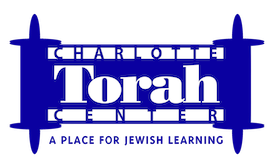| In the last month, we have seen the tearing down of statues of many famous historical figures. Much can be said about how we remember people with problematic pasts or what modern ethics we can impose upon historical figures. We can also use this as an opportunity to discuss the role of statues and monuments as a whole.In the final years of the 40 year sojourn in the desert en route to the Land of Israel, the Jewish men of that time got involved with the daughters of Moav, a cruel nation hostile to Jews. They knew about Jews being faithful in their relationships and to G-d, so they sent their daughters out to seduce them. In addition, at that time the people got involved with idolatry at Ba’al Pe’or. A plague wiping out 24,000 people ensued; G-d instructed Moses and Elazer HaKohen to count the remaining Jews. Rashi uses a parable to comment on the timing of this census.This may be compared to a shepherd whose flock was ravaged by wolves who killed some of the sheep. He counted them to know how many were left. Another explanation: When they left Egypt and were entrusted to Moses, they were entrusted to him by number. Now when he is close to death and would have to return his flock, he returns them with a number.Rashi presents us with two different reasons for counting the people. The first is to connect the counting to the tragic plague that had just transpired but the second is to read it as an independent mitzvah-commandment-to count the people because Moses was about to step down as leader and hand back the ‘flock.’After experiencing tragedy, some people define themselves by it. Their lives and identity are forever consumed by the tragedy. Others may take the opposite approach and attempt to block it out, move on, and lead their lives as if it never happened. The Jewish approach is to take the tragedy and make something meaningful out of it. We start a new chapter, but the opening sentence provides context to that new chapter.We don’t have a tradition of building statues, monuments or museums to commemorate great Jewish figures or events but we do have a precedent to do something far more meaningful. The Talmud comments that when King Chizkiyah (Hezekiah) died, a yeshiva was established near his grave. Giving people the opportunity to come and learn Torah and provide a context for a life of meaning is the greatest testament that can be given. Lifeless monuments might provide momentary inspiration but having a group of people getting together to study something meaningful has far greater value.In Israel after WW II, Rav Yosef Kahaneman rebuilt the Yeshiva he had led before the war in Lithuania. But that wasn’t enough, he had a vision to make a ‘monument’ for Jewish communities that had been destroyed in the Holocaust. He called it Ohel Kedoshim, the Tent for the Holy Ones. His plan was to have a building in which survivors of the destroyed towns and cities would come to one day a year to learn and dedicate the day to their friends, neighbors, and relatives who had been murdered. Each day would be dedicated to a different community. (Unfortunately, Rav Kahaneman died before completing the project and for years it stood as an empty shell. Today it is a yeshiva packed with energetic young minds carrying on the Torah study that was denied to those who perished.)Some people have memorialized a tragic incident or personal loss by making a substantial donation to a Yeshiva or hospital, others commissioned writing a Sefer Torah, Torah scroll, to honor someone’s memory. Every time the Torah is taken out of the Ark to be read it is a merit for the departed soul.Whether we choose to memorialize a person or event by establishing a yeshiva, writing a Torah scroll or do some other project of significance that will affect people’s lives, the goal remains the same; it allow us and others to become better people by learning from that person or event. The best way to remember the past is to honor the future. [Sources: Rashi, BamidbarNumbers 26:1 with explanation of Rav Ovadia of Bartenura (1445-1515) in Amar Naka;Bava Kama 16b] |
| Our Standing Offer Interested in a one-on-one study? Got a Jewish question you want answered? Is there a specific topic you would like to hear more about? Please contact info@charlottetorahcenter.com and we will make that happen. Good Shabbos Rabbi Oppenheim Charlotte Torah Cente |

